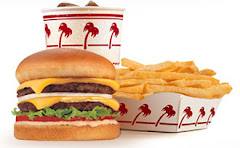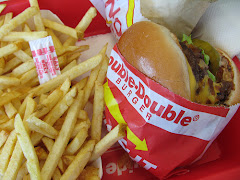 Danish cuisine is one of the oft-overlooked areas of the food world. This is not without reason: Denmark is relatively small compared to its other European counterparts (too small to stand up to the French culinary giant) and its Nordic-influenced foods are too heavy and fatty to be embraced by the carb-watching citizens of the United States. However, a few dishes have made their way over the pond and have enjoyed success as cult dishes with small but loyal eaterships.
Danish cuisine is one of the oft-overlooked areas of the food world. This is not without reason: Denmark is relatively small compared to its other European counterparts (too small to stand up to the French culinary giant) and its Nordic-influenced foods are too heavy and fatty to be embraced by the carb-watching citizens of the United States. However, a few dishes have made their way over the pond and have enjoyed success as cult dishes with small but loyal eaterships.One such dish is the æbleskiver, a pastry-like item that is traditionally eaten as a dessert during Christmas when served in Denmark, but which has morphed into a year-round breakfast item when served in the United States. The æbleskiver is traditionally served topped with powdered sugar and jam, and fits in well at the breakfast table thanks to its remarkable similarity in taste and texture to the pancake.
The biggest thing the æbleskiver has going for it and the one thing that makes it a total departure from the pancake is its very odd shape. As you'll notice from the photo above, the æbleskiver is round. It is cooked in a cast iron pan with seven half-rounded depressions, sort of like a muffin pan that is deeper and more rounded. Since the word "æbleskiver" is foreign, hard to spell, and strange to pronounce, some have taken to describing these by their Americanized
name, "Pancake Balls." It is worth noting that I find this lazy, xenophobic, and a little bit retarded.
The æbleskiver is round because of the pan it is cooked in, which when used properly leaves a nice crisp exterior shell that protects a soft bread interior. It is possible to make a softer æbleskiver by cooking it for a shorter period of time, and some may prefer this rendition, but personally speaking I enjoy a well-made æbleskiver with just a bit of crunch before getting to the soft part. Traditionally these are enjoyed with powdered sugar and jam, but the comparisons to the pancake have led some to try these with a little bit (or a whole lot) of maple syrup. While both versions have their merits, American eaters more accustomed to the pancake will find that maple syrup is a perfect addition.
The one problem with the æbleskiver is availability. Since this is a Danish treat--and as I mentioned before, Danish food is hard to come by in the states--you have to go pretty far out of your way to find them. My only experience with the æbleskiver has been in Solvang, California, a "Danish" town/strip mall which boasts wonderful Danish cuisine and the finest novelty t-shirt and magnet stores, all housed in German architecture-inspired buildings. If you do not live in Southern California and are feeling intrepid, you can purchase an æbleskiver pan online, and teach yourself the fine art of æbleskiver-making. It takes some practice, but in the end the process is much easier than it looks. I recommend purchase of the pan 1) because they are so easy to make and 2) because the limited amount of Danish breakfast restaurants means this is your only option for regular æbleskiver enjoyment. This post does not do very much to illuminate the process of making æbleskivers, but for those who have never heard of or tasted these, hopefully it will make you more likely to try them if you are ever in a restaurant that offers them.



No comments:
Post a Comment